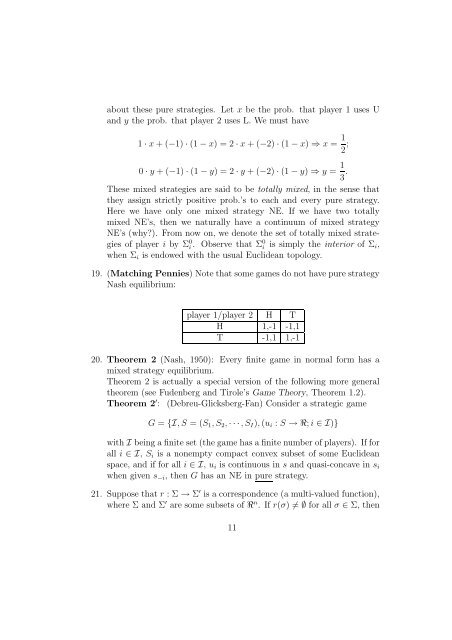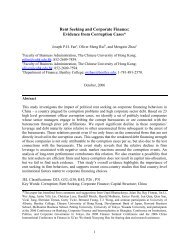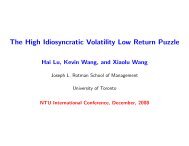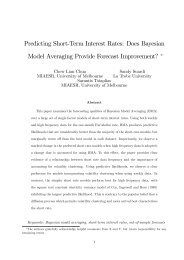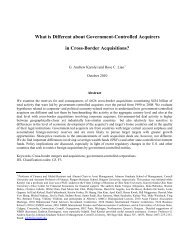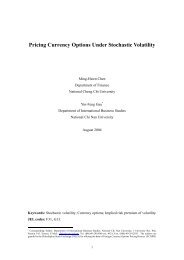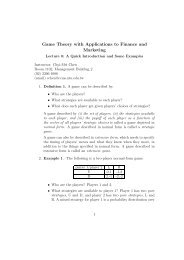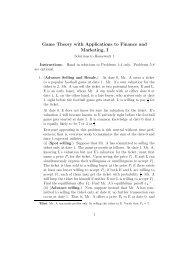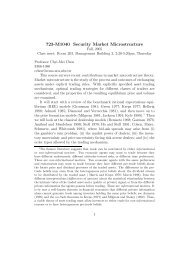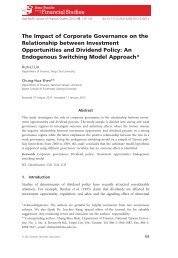Game Theory with Applications to Finance and Marketing
Game Theory with Applications to Finance and Marketing
Game Theory with Applications to Finance and Marketing
Create successful ePaper yourself
Turn your PDF publications into a flip-book with our unique Google optimized e-Paper software.
about these pure strategies. Let x be the prob. that player 1 uses U<strong>and</strong> y the prob. that player 2 uses L. We must have1 · x + (−1) · (1 − x) = 2 · x + (−2) · (1 − x) ⇒ x = 1 2 ;0 · y + (−1) · (1 − y) = 2 · y + (−2) · (1 − y) ⇒ y = 1 3 .These mixed strategies are said <strong>to</strong> be <strong>to</strong>tally mixed, in the sense thatthey assign strictly positive prob.’s <strong>to</strong> each <strong>and</strong> every pure strategy.Here we have only one mixed strategy NE. If we have two <strong>to</strong>tallymixed NE’s, then we naturally have a continuum of mixed strategyNE’s (why?). From now on, we denote the set of <strong>to</strong>tally mixed strategiesof player i by Σ 0 i . Observe that Σ 0 i is simply the interior of Σ i ,when Σ i is endowed <strong>with</strong> the usual Euclidean <strong>to</strong>pology.19. (Matching Pennies) Note that some games do not have pure strategyNash equilibrium:player 1/player 2 H TH 1,-1 -1,1T -1,1 1,-120. Theorem 2 (Nash, 1950): Every finite game in normal form has amixed strategy equilibrium.Theorem 2 is actually a special version of the following more generaltheorem (see Fudenberg <strong>and</strong> Tirole’s <strong>Game</strong> <strong>Theory</strong>, Theorem 1.2).Theorem 2 ′ : (Debreu-Glicksberg-Fan) Consider a strategic gameG = {I, S = (S 1 , S 2 , · · · , S I ), (u i : S → R; i ∈ I)}<strong>with</strong> I being a finite set (the game has a finite number of players). If forall i ∈ I, S i is a nonempty compact convex subset of some Euclideanspace, <strong>and</strong> if for all i ∈ I, u i is continuous in s <strong>and</strong> quasi-concave in s iwhen given s −i , then G has an NE in pure strategy.21. Suppose that r : Σ → Σ ′ is a correspondence (a multi-valued function),where Σ <strong>and</strong> Σ ′ are some subsets of R n . If r(σ) ≠ ∅ for all σ ∈ Σ, then11


